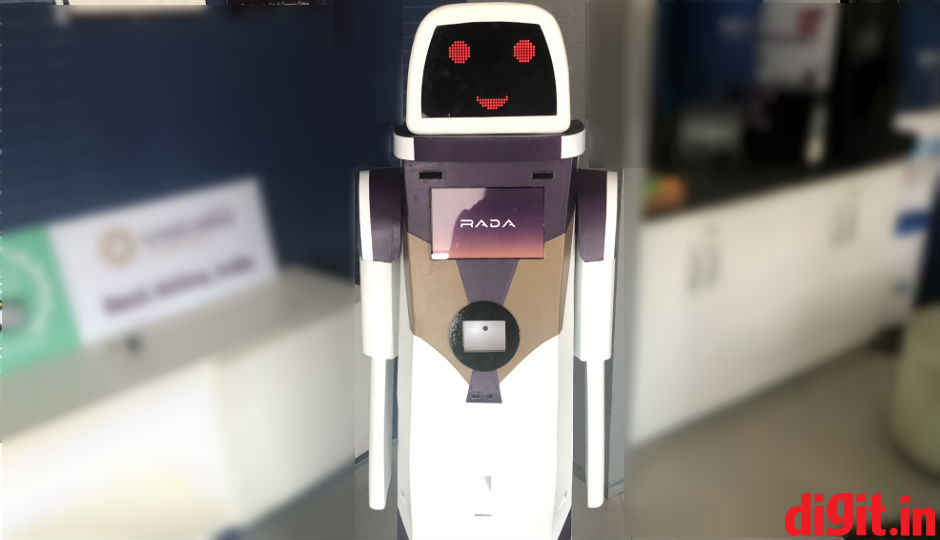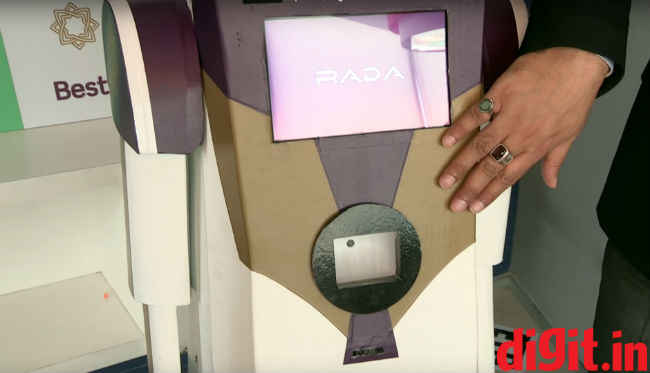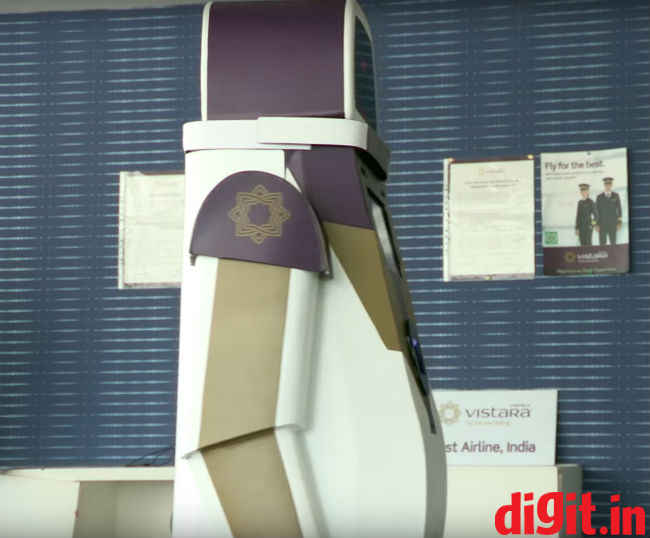Vistara wants to open doors for robotics in aviation starting with made-in-India robot RADA
RADA is a basic robot created by Vistara as an experiment in outsourcing mundane customer service tasks to machines. It may not be disruptive, but will be the first such machine at an Indian airport.

When one hears the word Robot, one suddenly finds themselves imagining sentients that will one day outpace and outrace humans to create a society led by machines. Although robots now play a crucial role in various industries and manufacturing processes, personal robots or consumer-grade robots are far and few apart. Still, robots are now setting world records, serving drinks at restaurants, running on fours like dogs, forming colonies as ants, and even gaining citizenship of actual countries.
 Survey
SurveyWhile robots are increasingly becoming more sophisticated, when startup airline Vistara wanted to make one, they literally began from scratch. RADA, the robot created by the airline, is as basic as they come. It does not claim to recognise your face, neither can it check you in or get you a cup of coffee. RADA’s purpose is simple – to set an example.
“I was hungry to create something. It’s a brave thing to put thoughtfulness and innovation as your core values. So we just created it. Idea was that hey, can someone move and bring the counter to the customer, can someone print tickets, can someone tell passengers which gate to go to, can someone interact, can someone do announcements and as we were building this (RADA) we thought can we build swarms of robots – someone to carry luggage, if airports allow us. Can we associate a set of robots to a particular family till their journey to gate. We also thought can we bring them inside the aircraft and totally disrupt the airline industry and the mechanics of it. So ideation is huge,” Ravinder Pal Singh, Vistara’s Chief Information and Innovation officer said explaining how RADA is far from what the airline has imagined for a possible future.
“It’s truly an experimentation,” said Singh who led the creation of RADA. The robot, in its current state, can be used to bring up information such as boarding details, weather in destination city, details about Vistara’s frequent flyer programme and more. It will also be able to make announcements regarding flight departures and delays. When placed at Vistara’s Signature Lounge at Delhi Airport’s Terminal 3, RADA will remain at a dedicated stationary spot. Those who walk into the lounge will be able to scan the QR code of their boarding pass on RADA to bring up flight information and destination city’s weather forecast. RADA will also be able to move around within the lounge on a dedicated path by scanning markers placed along the floor. This is so it can go to individual passengers sitting in the lounge and make flight-related announcements.
RADA's boarding pass code scanner
“RADA is not a fancy robot. It is made from Sun Cardboard. If you actually buy a sheet of Sun Cardboard, that sheet will be pretty huge and it costs only Rs 350, but it’s a very durable material. The interesting part is that it is made out of recycled material. Sustainability goes to the ethos of both Tata Group and Vistara,” explained Singh.
In a bid to create something in-house and in India, materials to create RADA, including the Sun Cardboard used in its body and its rectangular aluminium chassis were sourced locally from placed like Sadar Bazar and Chandni Chowk, in New Delhi. Even the wheels which help RADA move and rotate 365 degrees were sourced from a local toy store to keep building costs at bay.
“If you use aluminium and combine it with cardboard, you try to think like an architect who is designing a house. You think about factors like centre of gravity. So if RADA falls nothing is going to happen because it has got so many line of aluminium going through it that it is actually strong,” Singh told Digit.
RADA’s voice recognition system was also developed in-house and instead of using a wake word to recognise commands, RADA uses its proximity sensors to determine if a user is standing within its recognition range while asking a question.
Singh tells us, “What we have written is a custom code. It doesn’t have deep lexical analysis, taxonomy tree or that kind of cognitive ability and that is by design. Firstly, I didn’t want to spend years to build some kind of algo which will make sense. Secondly, I wanted to put something out and capture the reactions of people using it to even confirm if this is a successful experiment or not.”
If RADA is asked questions related to Vistara, it will provide fairly accurate answers because it has been programmed to do so, but if you ask it non-vistara related random questions, all it is capable of doing is giving a reply, which may or may not be ideal. “It’s like an infant child which can speak,” said Singh. “We are educating RADA gradually. I don’t even expect an accuracy of 120 – 12 percent as of now,” he added.
At the very heart of RADA sits a Raspberry Pi computer which helps it achieve its basic computational tasks. It uses a combination of sensors and cameras to move and determine a user’s position. In its cognitive mode, which will not be open to passengers for now, RADA can even search the internet for replies to questions it is not programmed to answer. A cheap Android tablet makes up its chest and is placed there for users who want to play a game or watch videos on RADA. However, currently, Vistara has no infotainment tie-ups and users will be restricted to watching YouTube videos, if at all. Singh tells us that if RADA becomes a success, Vistara may look to partner with digital content providers for passenger entertainment services.
For now, RADA’s aim is to gain more experience once placed at Delhi’s international airport. Through this trial period, Singh will review the robot’s logs and try to gain more knowledge about how passengers interact with it to improve the experience. We are told that there is a RADA 2.0 in the works, but that’s about all we know right now.
Is RADA the first step towards the use of robots in the Indian aviation industry? Maybe it is, or maybe it’s just a one-time marketing gig. But is it a step in the right direction? Yes, it is. Concluding this sentiment, Singh said, “One thing which I know, even though It may be in an experimental stage, this part of technology which is highly mature and highly proven in different industries should be explored by aviation.”

